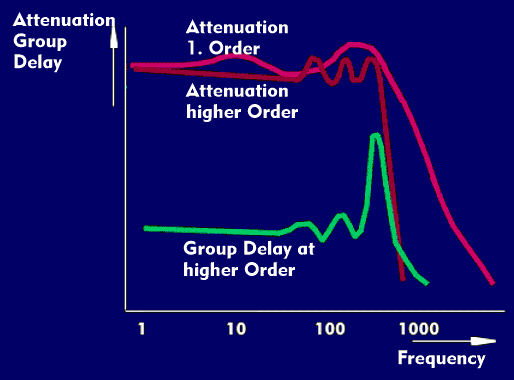Tschebyscheff filter
In contrast to other filter types such as the Bessel filter or the Butterworth filter, the Chebyshev filter exhibits a strong overshoot at the cutoff frequency, followed by a sharply falling attenuation behavior.
The filter characteristics of a Chebyshev filter are derived from the Chebyshev polynomials. There are two different types of Chebyshev filters. Both exhibit a certain amount of ripple. Type I is concerned with the ripple in the passband( DB), while Type II is concerned with that in the stopband. Due to the ripple in the passband, the phase response of type I has a strong nonlinearity and the group delay is also strongly frequency dependent. The behavior of the stopband is extremely flat. Due to the strong ripple in the passband, pulse and square wave signals are transmitted with strong overshoot. The steep drop in the attenuation curve after the cutoff frequency is interesting and can be used for practical applications.
The situation is different for type II, which exhibits a uniform ripple in the stopband and minimizes the absolute difference between the ideal and the actual frequency response over the entire stopband. The passband, on the other hand, is extremely flat.

